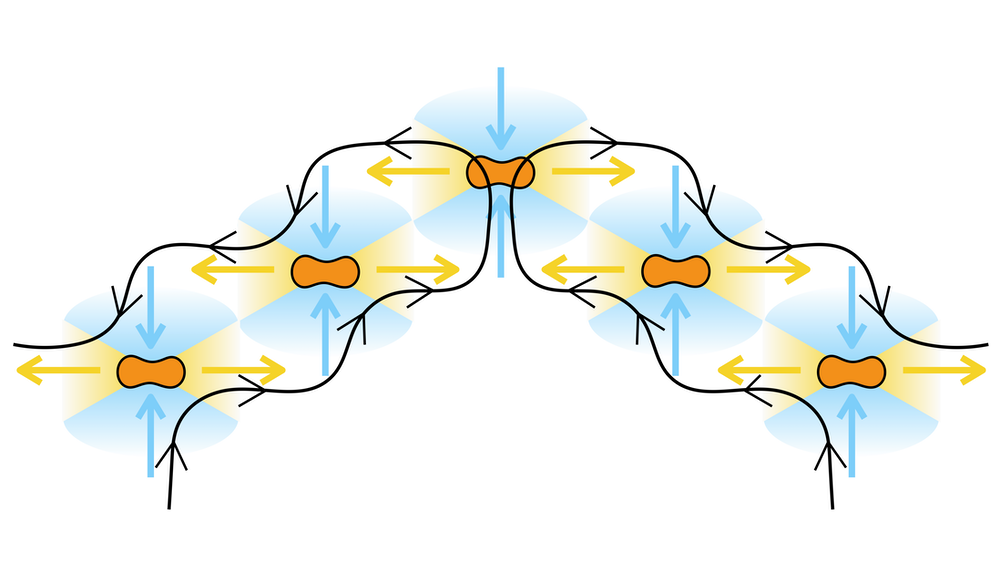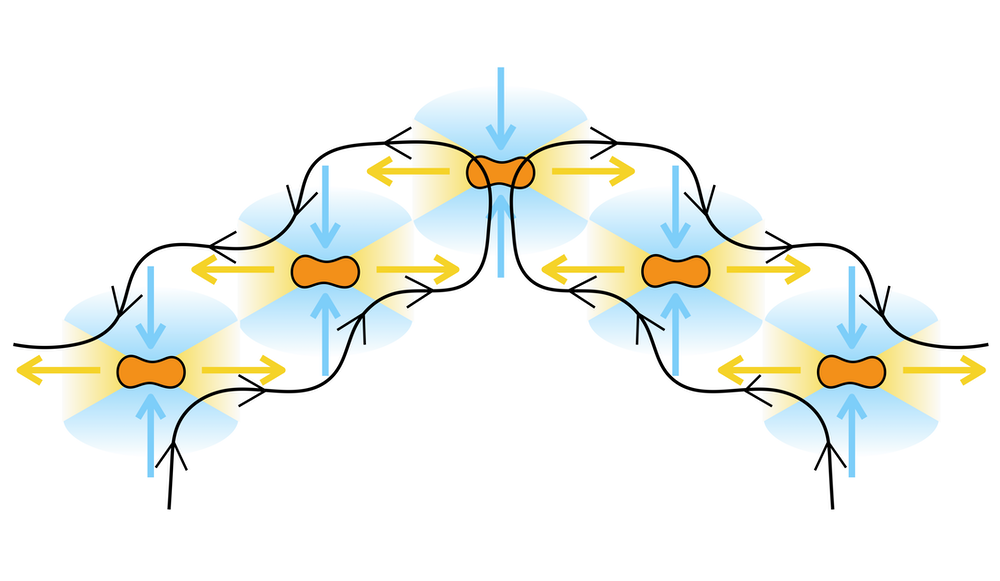• Physics 16, 138
A zigzag arrangement that appears spontaneously in a collection of magnetic particles and some other colloids is explained by the fluid flow around each particle.
When molecules or bacteria organize into a long-range pattern, researchers want to understand how the microscopic interactions lead to the macroscopic order. Pietro Tierno of the University of Barcelona and his colleagues observed such self-organization in magnetic particles suspended in a liquid and subjected to an oscillating magnetic field [1]. Through experiments and simulations, the team showed that the resulting zigzag pattern is explained by the fluid flow generated around the oscillating particles, not by any details of the particles or the applied field. Similar zigzag patterns have also been seen in charged colloids subjected to oscillating electric fields [2], so the explanation may cover a range of particle systems. The researchers also believe that understanding and controlling the effect could lead to useful applications in microfluidics devices.
The team’s 2.6-µm-long magnetic particles were made of the iron oxide compound hematite. Each one had a peanut shape, with two 1.2-µm-wide lobes separated by a narrower waist and a magnetic dipole moment oriented perpendicular to its long axis. The team placed these particles in water mixed with a bit of polymer, which created a slightly viscoelastic fluid, essential for the pattern formation. The particles sunk to a fixed depth where gravity balanced electrostatic repulsion with the floor of the container, making the experiment entirely two-dimensional. A complicated external magnetic-field oscillation caused each particle to roll like a pencil on a table in alternate directions about four times per second while keeping its long axis aligned with the others.
Tierno and his colleagues found that the rolling motion caused each particle to push fluid away at the ends of its two lobes (along the long axis) and pull fluid in around its waist. As a result, two nearby particles would either attract or repel one another, depending on their relative positions. However, the fluid-mediated force was minimized in four zones located around each particle at angles of +31° and –31° with respect to the long axis. So the particles naturally migrated toward long zigzagging bands inclined at these angles. But the particles were not frozen in these bands; instead, the combined fluid flow from the individual particles led to a conveyor-belt-type behavior that moved the particles back and forth along the bands. The researchers believe these long-distance flows could be used to deliver chemical components across a lab-on-a-chip device.
–David Ehrenstein
David Ehrenstein is a Senior Editor for Physics Magazine.
References
- G. Junot et al., “Large scale zigzag pattern emerging from circulating active shakers,” Phys. Rev. Lett. 131, 068301 (2023).
- F. Katzmeier et al., “Emergence of colloidal patterns in ac electric fields,” Phys. Rev. Lett. 128, 058002 (2022).
Subject Areas
"flow" - Google News
August 11, 2023 at 10:02PM
https://ift.tt/YS43a1K
Physics - Self-Organized Zigzags from Fluid Flow - Physics
"flow" - Google News
https://ift.tt/qezKR5L
https://ift.tt/4hbtyG9
Bagikan Berita Ini

















0 Response to "Physics - Self-Organized Zigzags from Fluid Flow - Physics"
Post a Comment